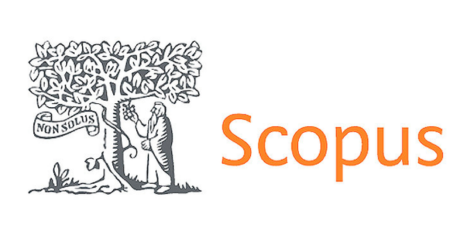Introduction
The prevalence of overweight, hypertension (HTN), type 2 diabetes mellitus (T2DM), and dyslipidemia has increased in the last decade
1
; these comorbidities are considered risk factors for the development of cardiovascular and metabolic diseases, which, in turn, are associated with a higher risk of mortality
2
. The incidence of morbidity increases with age, and the most common chronic conditions are cardiovascular diseases, diabetes mellitus, and obesity
3
. These diseases cause progressive chronic inflammation, so early interventions are important to reduce the inflammatory process and, consequently, prevent cardiovascular complications and reduce the use of pharmacological therapies.
A non-pharmacological treatment option is physical activity (PA), which reduces the occurrence of cerebrovascular events (CVE) by 20% to 30% and constitutes one of the pillars of non-pharmacological therapy for controlling T2DM
4
; another beneficial effect of PA is the reduction of blood pressure (BP)
5
.Despite consistent evidence and recommendations, many people fail to maintain exercise routines, and when muscle-strengthening activities are included, only 23% meet the recommendations
6
.
Regarding occupation, secondary education teachers are considered sedentary or physically inactive, as they do not meet the World Health Organization (WHO) recommendations
7
, which suggest participating in at least 150 minutes of moderate-intensity physical activity or 75 minutes of vigorous-intensity physical activity per week.
To engage inactive individuals in exercise, it is necessary to conduct structured physical training, considering individual strategies for promoting PA and behavioral changes. Healthy lifestyles based on physical activity should be integrated into promotion programs, which can include recreational exercise, social support, access to training facilities, and adequate exercise options near the workplace—factors that should be considered to improve a comprehensive lifestyle alongside a nutritional program.
The implementation of physical activities in public institutions has been considered essential to reduce cardiovascular risk factors and delay the functional decline that intensifies after age 40
8
. Therefore, research priorities should focus on developing and evaluating strategies currently in use to determine if they are effective and cost-efficient in countering the burden of multimorbidity mentioned earlier in both individuals and the healthcare system
9
.
The main objective of this study was to evaluate whether a comprehensive intervention involving physical exercise and nutritional workshops could early reduce some cardiovascular risk factors in secondary education teachers. It is hypothesized that the change in body composition, quantified using bioimpedance equipment, will be favorable in the intervention group. Secondary objectives include quantifying variations in the lipid profile and blood pressure.
Materials and Methods
Materials and Methods
An interventional study was conducted with secondary education teachers from six public institutions. All participants, after signing informed consent, were initially evaluated to determine their baseline physical condition, weight, height, vital signs, including blood pressure, and body composition. To measure body composition variables, such as fat mass, lean mass, muscle mass, and total body water, the SECA® tetrapolar and multifrequency bioimpedance analysis (BIA) equipment was used. To classify the degree of obesity in patients, the body mass index (BMI) was used, according to the criteria of the World Health Organization. Two study groups were randomly established. Participants selected randomly were contacted by phone to invite them to participate in the intervention program. Those whose schedules were incompatible with the intervention were placed in the control group, and another teacher was invited until the sample size was reached.
Teachers in the intervention group participated in both physical and educational activities. The exercise program was clinically guided by a physical therapy professional, who evaluated the frequency (once a week) and duration (at least one hour). The instructor promoted exercise progression, dynamism, and empathy to encourage participant adherence. All sessions began with a general warm-up, consisting of a five-minute walk, followed by a five-minute stretching period for both the upper and lower body. Next, the main exercises were performed, which remained the same in every session throughout the three months. The main sessions included lower-body exercises (squats, hip thrusts), upper-body exercises (lateral shoulder raises using water bottles or half-kilogram weights, push-ups, tricep dips), abdominal muscle exercises (planks), and cardiorespiratory fitness exercises (jump rope). Exercise sets consisted of one minute of active movement followed by one minute of rest. After each weekly activity, an oral and written informational session was provided with leaflets about nutritional lifestyle changes, diet, and menus.
At the end of the three-month intervention, all participants from both the control and intervention groups were brought together to measure weight, vital signs, lipid profile, blood glucose, and body composition.
Sample Size
A 95% confidence level was considered, with a 4% margin of error and a 1:1 intervention/control ratio; additionally, a sample power of 80% and a p-value of <0.05 were used. Thus, the final sample consisted of 594 people of both sexes, including 10% for potential participant dropouts during the study. The sample size was calculated using the STATA version 14.2 statistical software.
Statistical Analysis
For qualitative evaluation, simple and cross-tabulations were used; for quantitative analysis, the mean and standard deviation were used to represent central tendency and dispersion. The Shapiro-Wilk test was used to confirm normality and to choose between parametric or non-parametric tests. Categorical variables are described with absolute and relative frequencies. Continuous variables with parametric distribution are described with mean and standard deviation, while non-parametric variables are expressed as Meann and interquartile range.
To compare quantitative variables between the control and intervention groups, Student's t-test was used. When analyzing categorical data and their relationships, Pearson's chi-square test or Fisher's exact test was used.
A logistic regression model was used to evaluate the relationship between potential risk factors and the probability of the event in the intervention group. The odds ratio (OR) was used to quantify the effect size, with a significance level set at 5% and a 95% confidence interval (CI). The data were processed in a database and statistically analyzed using STATA version 14.2 software.
The procedures were carried out in accordance with the ethical principles of the Declaration of Helsinki of 1964 and its subsequent amendments. The project was approved by the Research Committee of the Hospital Daniel Alcides Carrión (approval number: 7-03-2022 CEI-HRDCQDAC). Patients also provided written informed consent.
Results
All participants who entered the study were over 18 years old and engaged in educational activities. Of the 594 individuals who initially entered the study, 556 completed the program. The average age of participants was 43 ±11 years; 34% were between 21 and 37 years old, with the majority being female (74%)
Out of the total participants, 20.8% had some comorbidity; the most common was metabolic syndrome, present in 18.2%, followed by hypertension (HTN) in about 2% of the participants. Regarding systolic blood pressure, the average was 114 mmHg, while the average diastolic blood pressure was 69.7 mmHg.
The average baseline weight of the population was 65.4 kg, and the average body mass index (BMI) was 26.8±3.9 kg/m². At the beginning of the study, 23.3% of the population was classified as obese, and 52.69% were classified as overweight. The lipid profile characteristics showed that the average triglycerides level was 167 mg/dL, total cholesterol had a mean of 199 mg/dL, and HDL cholesterol had an average of 50.96 mg/dL. The average glucose level of participants at the start of the study was 50.87 mg/dL (table 1).
At the beginning of the intervention, body composition, assessed by bioimpedance analysis, showed that the average body fat percentage was 30.5%, body water was 50%, muscle mass was 42%, and bone mass was 4.3%.
Of the total participants, 274 completed the study in the intervention group and 282 in the control group. Participants who entered the intervention program, which was based on exercise and an educational workshop on balanced nutrition, experienced a significant reduction in visceral fat mass by an average of 5.7% (p<0.015); HDL cholesterol increased by 8.9 mg/dL (p=0.025); and body water composition also increased by an average of 5.4% (p<0.041). Other anthropometric parameters such as BMI, mean blood pressure, glucose, and triglycerides showed a slight decrease but without statistical significance(table 2).
Multivariate analysis revealed that participants in the intervention program were more likely to increase HDL cholesterol (OR 1.409; 95% CI 1.213-2.089; p=0.037). Other factors showing a beneficial effect included a reduction in total weight (OR 1.135; 95% CI 1.081-1.424; p=0.041) and a reduction in visceral fat mass (OR 2.651; 95% CI 1.781-3.271; p=0.024). Other factors that showed significance in the bivariate analysis, such as the reduction in systolic blood pressure and cholesterol, as well as the increase in body water and muscle mass, did not maintain significance in the final model(tabla 3).
Table 1. Baseline characteristics of secondary education teachers from public institutions
|
Characteristics
|
Total n=594
|
%
|
| Age: Mean (SD); range |
43.9 (11.8) |
21-77 |
| Age tertiles |
|
|
| 21-37 |
201 |
34.2% |
| 38-49 |
200 |
34.2% |
| 50-77 |
193 |
31.5% |
| Gender |
|
|
| Male |
149 |
26.24% |
| Female |
445 |
73.76% |
| Weight (kg): Mean (SD); range |
65.48 (11.3) |
41.5-125 |
| Height (m): Mean (SD); range |
1.56 (0.08) |
1.38-1.8 |
| BMI: Mean y SD |
26.8 (3.91) |
16.8-44.28 |
| <20 |
12 |
1.9% |
| 20-25 |
209 |
37.5% |
| 25-35 |
405 |
62.9% |
| >35 |
18 |
2.8% |
| Comorbidity |
116 |
20.8% |
| Metabolic syndrome |
101 |
18.2% |
| HTN |
11 |
1.9% |
| T2DM |
4 |
0.7% |
| Obesity (BMI >30) |
130 |
23.38% |
| Overweight (BMI 25-30) |
293 |
52.69% |
| SBP (mmHg): Mean y SD |
114.13 |
13.01 |
| DBP (mmHg): Mean y SD |
69.71 |
8.68 |
| Triglycerides (mg/dL): Mean y SD |
167.90 |
112.2 |
| HDL Cholesterol (mg/dL): Mean y SD |
50.96 |
37.23 |
| Glucose (mg/dL): Mean y SD |
87.75 |
50.84 |
| Cholesterol (mg/dL): Mean y SD |
199.0 |
45.04 |
| Body composition |
|
|
| Fat mass (%) |
30.53 |
20.38 |
| Total body water (%) |
50.05 |
9.36 |
| Muscle mass (%) |
42.04 |
6.16 |
| Bone mass (%) |
4.32 |
0.67 |
BMI: Body Mass Index; HTN: Hypertension; T2DM: Type 2 Diabetes Mellitus; SBP: Systolic Blood Pressure; DBP: Diastolic Blood Pressure; SD: Standard Deviation.
Table 2. Analysis of modifiable factors after the implementation of the intervention program in secondary education teachers
|
Characteristic
|
Control group
n=282 (50.7%)
|
Intervention Group 274 (49.3%)
|
P |
| Mean |
SD |
Mean |
SD |
| Weight (kg) |
66.3 |
11.3 |
63.4 |
11.47 |
0.049 |
| BMI |
26.8 |
3.85 |
26.7 |
3.87 |
0.547 |
| SBP (mmHg) |
80.9 |
9.6 |
80.2 |
10.6 |
0.813 |
| MAP (mmHg) |
114.3 |
13.1 |
107.1 |
7.8 |
0.036 |
| DBP (mmHg) |
69.8 |
8.6 |
69.7 |
8.7 |
0.726 |
| Triglycerides (mg/dL) |
169.8 |
112.3 |
165.9 |
101.2 |
0.799 |
| HDL Cholesterol (mg/dL) |
50.9 |
37.2 |
59.8 |
44.3 |
0.025 |
| Glucose (mg/dL) |
87.8 |
30.8 |
85.9 |
15.7 |
0.527 |
| Total Cholesterol (mg/dL) |
199.1 |
45.1 |
186.8 |
46.2 |
0.041 |
| Fat Mass (%) |
33.2 |
20.4 |
27.5 |
8.1 |
0.015 |
| Body Water Composition (%) |
43.5 |
9.36 |
48.1 |
8.01 |
0.041 |
| Muscle Composition (%) |
38.3 |
6.16 |
42.1 |
6.4 |
0.032 |
| Bone Composition (%) |
4.1 |
0.67 |
4.32 |
2.81 |
0.168 |
BMI: Body Mass Index; SBP: Systolic Blood Pressure; DBP: Diastolic Blood Pressure; MAP: Mean Arterial Pressure; SD: Standard Deviation
Table 3. Multivariate analysis of body composition and lipid profile after the intervention program compared to the control group
|
Characteristic
|
Adjusted OR
|
95% CI
|
P-value |
| Total weight reduction |
1.135 |
1.081-1.424 |
0.041 |
| Reduction in SBP (mmHg) |
1.207 |
0.929-1.627 |
0.052 |
| Increase in HDL cholesterol |
1.409 |
1.213-2.089 |
0.037 |
| Reduction in total cholesterol |
1.27 |
0.933-1.625 |
0.068 |
| Reduction in visceral fat mass |
2.651 |
1.781-3.271 |
0.024 |
| Increase in body water |
1.283 |
0.92-1.642 |
0.057 |
| Increase in muscle mass |
1.72 |
0.934-2.85 |
0.061 |
SBP: Systolic Blood Pressure; HDL: High-Density Lipoproteins; OR: Odds Ratio adjusted for age and sex.
Discussion
This study evaluated the effects of an individualized intervention based on physical exercises and nutritional education workshops held once a week for three consecutive months. Additionally, the changes in body composition were quantified using bioimpedance equipment in secondary school teachers from the province of Huancayo, Peru. This individualized intervention resulted in considerable improvements, including a reduction in visceral fat mass, a decrease in total body weight, and an increase in HDL cholesterol levels. In the United Arab Emirates, a similar intervention highlighted the effectiveness of combining nutritional counseling and exercise to improve cardiovascular health. Although our focus and population were different, both studies reinforce the importance of these strategies for the adoption of healthy habits
11
.
The results show that after the intervention, the averages for visceral fat mass and total body weight decreased, which is consistent with other findings
10
; The difference with these studies was that the intervention lasted six months and found significant variations. A challenge with this intervention was the lack of continuity after the program ended; to maintain continuity, some studies used mobile apps to continue the physical exercises
12
.
Although the study lasted three months, its results were similar to those found in an intervention program conducted over more than five years, regarding the reduction of cardiovascular risk
13
. The improvements in this study can be primarily attributed to the delivery of individualized diet and physical activity recommendations.
A meta-analysis showed significant weight loss with interventions focused on overweight individuals and emphasized the importance of personalizing these interventions to meet the needs of different groups, a key principle in this research. These findings highlight the need for personalized and sustainable strategies to improve cardiovascular health, especially in work environments with high-risk factors
14
.
The findings are consistent with previous studies
15
, that evidenced significant weight loss in employees with overweight or obesity, even during the COVID-19 pandemic, reinforcing the effectiveness of workplace weight-loss programs. Similarly, another study
16
,observed improvements in diet and physical activity with weight loss among school district employees, highlighting the relevance of comprehensive and personalized interventions. Likewise, an intervention study
17
demonstrated the effectiveness of improving workplace lifestyle interventions for obesity control, aligning with our focus on reducing cardiovascular risks.
The findings also show significant parallels with recent research
18
highlighting the efficacy of workplace dietary interventions in reducing overweight and obesity, noting that they are more effective in individuals with higher BMI. Garipova et al.
19
reported that both educational and physical activity programs are effective in mitigating cardiovascular risks, though with variations in their long-term effects. On the other hand, Chad-Friedman et al.
20
demonstrated that phone-based interventions combined with mind-body techniques such as meditation and yoga successfully reduced stress and increased emotional and physical well-being. Additionally, individualized nutrition proved effective in reducing weight and improving systolic blood pressure, with sustained effects in the medium term. These studies underline the importance of integrated and personalized approaches to improving cardiovascular health in workplace settings.
Recent studies have demonstrated that HDL particles are key in reducing cardiovascular risk, underscoring the importance of applying therapeutic approaches such as diet and interactions with the gut microbiome to modulate HDL structure and function on an individual level
21
. Similarly, the increase in HDL cholesterol was the main protective factor. It is well known that high fiber, fruit, and vegetable intake, along with a low intake of fats and processed foods, contributes to reduced inflammation and a more robust immune system
22
.
An advantage of this study is the use of bioelectrical impedance to quantify changes in body composition after the intervention, a non-invasive method that has been validated for assessing fat and muscle mass. This method works by emitting an electric current that passes through body compartments, providing resistance and causing a delay in conduction across membranes, leading to reactance. This helps estimate body compartments such as fat mass, bone mass, muscle mass, body water, and visceral fat
23
.
This study has some limitations: the loss of 38 participants during follow-up, representing 6.4%. However, this value is below 10%, which falls within the expected range. Another limitation was the lack of blinding. Despite this, the observed trends were consistent with favorable outcomes, and randomization of participants was performed. In the future, studies with longer follow-up periods should be conducted. Additionally, an objective tool, such as bioelectrical impedance, was used to measure early changes in body composition, such as the percentage of fat mass. Finally, due to time and resource constraints, this research did not carry out a sustained intervention for participants after the program concluded.





